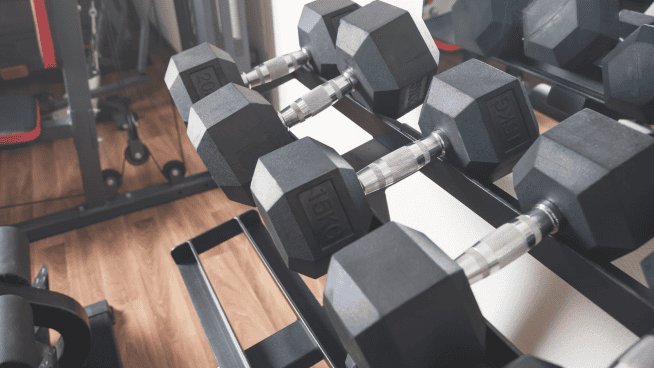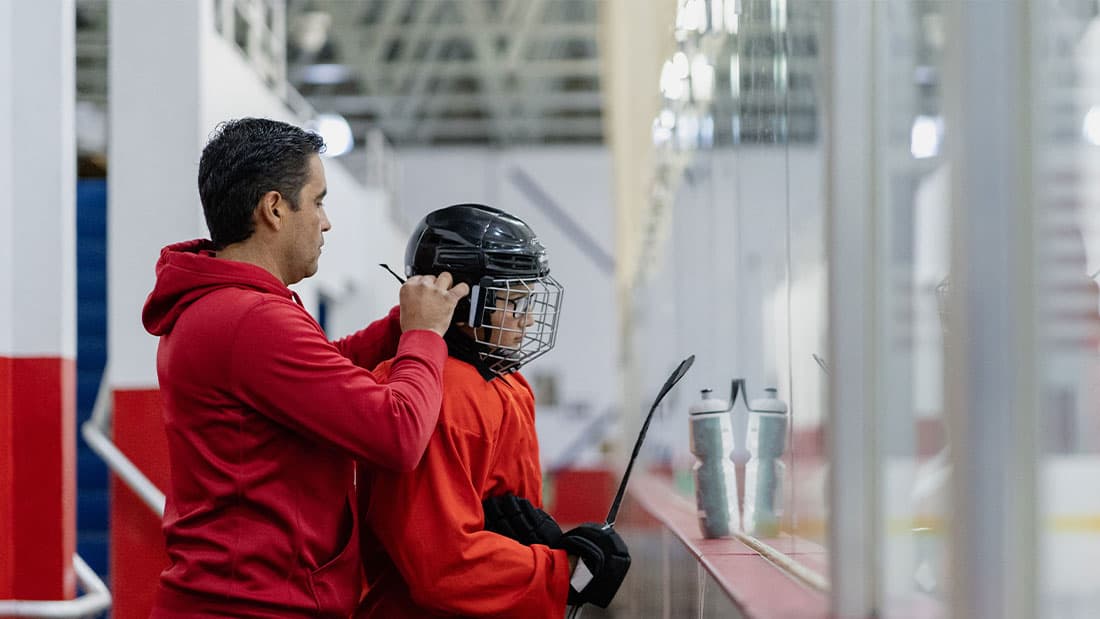Opinion: The Dangers of Olympic Weightlifting for Football Players
Olympic lifts are a staple of many football training programs. They effectively build power in a way that translates to on-field performance gains. However, they may not be the safest option for your football players.
You may be able to increase your athletes’ power output with these movements, but is it worth risking their health? Sometimes we are so focused on results that we forget that our primary job is to keep our athletes healthy. It doesn’t matter what exercise they perform as long as they get better and have the durability needed for a long season.
I love the iron game as much as anyone, to the point that I created Fusion Weightlifting, a USA Weightlifting-sanctioned club in New York City. But take a deep breath and open your mind before you continue reading. What I say may be controversial, but the goal is to provoke critical thinking and a discussion about this topic.
Football Wear and Tear
The football season is a grind, so you have to factor in the wear and tear your athletes will experience over a season. For example, let’s look at a defensive lineman. They are punching and jamming all season long, placing a significant amount of stress on their wrists.
During the Clean, Snatch and Jerk, the wrists are required to support heavy weight, often through an extreme range of motion. Performing these exercises may not immediately cause an injury; however, the combined stress from competition and the lifts can seriously compromise your players’ joints.
This even carries over to the off-season. Your athletes aren’t practicing and competing on a daily basis, but they may be battered and bruised from the previous season. The off-season is a time for recovery as much as a time to build strength, size and power. You don’t want your linemen to have banged up wrists before the season even starts.
Form Limitations
With a few exceptions, most football players don’t have perfect Olympic lifting technique. Why? They train to be football players, and they’re not in the business of spending countless hours perfecting exercise form like Olympic athletes. (See Master the Power Clean in 4 Steps.)
Even those who are fairly proficient often exhibit an overextension of the back. When the absolute power is no longer driving straight up, the effect of the exercise is diminished and unwanted stress is placed on the back. The risk is simply not worth the reward.
There’s an inherent danger when performing any exercise—especially with heavy weight—but Olympic lifts are extremely fast and dynamic. A lot must happen in a short amount of time, and there’s little room for error. Plus, athletes needs excellent mobility even to hold the bar in the proper position.
Time With Your Athletes
I think most coaches will agree that they don’t have a lot of time to work directly with their athletes. They likely come in anywhere from two to four times a week for 60 to 90 minutes.
Finding time to teach Olympic lifting technique is difficult when you are being paid to improve your athletes’ performance. Spending this time is hard to justify when there are alternative methods that are safer and equally effective.
Alternative Methods
I like to keep things simple by having my athletes perform plyometrics and med ball tosses, such as Overhead Med Ball Throws. These movements are easy to teach, safe to perform and suitable to be done in large groups. They may not be glamorous, but they achieve the same goal as Olympic lifts.
If you want your athletes to lift some serious weight, heavy Deadlifts are a great option.
[youtube video=”wR1_GzDsnaw” /]Now don’t get me wrong—I don’t completely eliminate Olympic lifts from my programming. I will certainly use them if an athlete is efficient in a movement, or is being tested in a specific lift. However, you will not find Olympic lifts in most of my football training plans.
Do you have questions? Make sure to leave a comment below.
RECOMMENDED FOR YOU
MOST POPULAR
Opinion: The Dangers of Olympic Weightlifting for Football Players
Olympic lifts are a staple of many football training programs. They effectively build power in a way that translates to on-field performance gains. However, they may not be the safest option for your football players.
You may be able to increase your athletes’ power output with these movements, but is it worth risking their health? Sometimes we are so focused on results that we forget that our primary job is to keep our athletes healthy. It doesn’t matter what exercise they perform as long as they get better and have the durability needed for a long season.
I love the iron game as much as anyone, to the point that I created Fusion Weightlifting, a USA Weightlifting-sanctioned club in New York City. But take a deep breath and open your mind before you continue reading. What I say may be controversial, but the goal is to provoke critical thinking and a discussion about this topic.
Football Wear and Tear
The football season is a grind, so you have to factor in the wear and tear your athletes will experience over a season. For example, let’s look at a defensive lineman. They are punching and jamming all season long, placing a significant amount of stress on their wrists.
During the Clean, Snatch and Jerk, the wrists are required to support heavy weight, often through an extreme range of motion. Performing these exercises may not immediately cause an injury; however, the combined stress from competition and the lifts can seriously compromise your players’ joints.
This even carries over to the off-season. Your athletes aren’t practicing and competing on a daily basis, but they may be battered and bruised from the previous season. The off-season is a time for recovery as much as a time to build strength, size and power. You don’t want your linemen to have banged up wrists before the season even starts.
Form Limitations
With a few exceptions, most football players don’t have perfect Olympic lifting technique. Why? They train to be football players, and they’re not in the business of spending countless hours perfecting exercise form like Olympic athletes. (See Master the Power Clean in 4 Steps.)
Even those who are fairly proficient often exhibit an overextension of the back. When the absolute power is no longer driving straight up, the effect of the exercise is diminished and unwanted stress is placed on the back. The risk is simply not worth the reward.
There’s an inherent danger when performing any exercise—especially with heavy weight—but Olympic lifts are extremely fast and dynamic. A lot must happen in a short amount of time, and there’s little room for error. Plus, athletes needs excellent mobility even to hold the bar in the proper position.
Time With Your Athletes
I think most coaches will agree that they don’t have a lot of time to work directly with their athletes. They likely come in anywhere from two to four times a week for 60 to 90 minutes.
Finding time to teach Olympic lifting technique is difficult when you are being paid to improve your athletes’ performance. Spending this time is hard to justify when there are alternative methods that are safer and equally effective.
Alternative Methods
I like to keep things simple by having my athletes perform plyometrics and med ball tosses, such as Overhead Med Ball Throws. These movements are easy to teach, safe to perform and suitable to be done in large groups. They may not be glamorous, but they achieve the same goal as Olympic lifts.
If you want your athletes to lift some serious weight, heavy Deadlifts are a great option.
[youtube video=”wR1_GzDsnaw” /]Now don’t get me wrong—I don’t completely eliminate Olympic lifts from my programming. I will certainly use them if an athlete is efficient in a movement, or is being tested in a specific lift. However, you will not find Olympic lifts in most of my football training plans.
Do you have questions? Make sure to leave a comment below.












